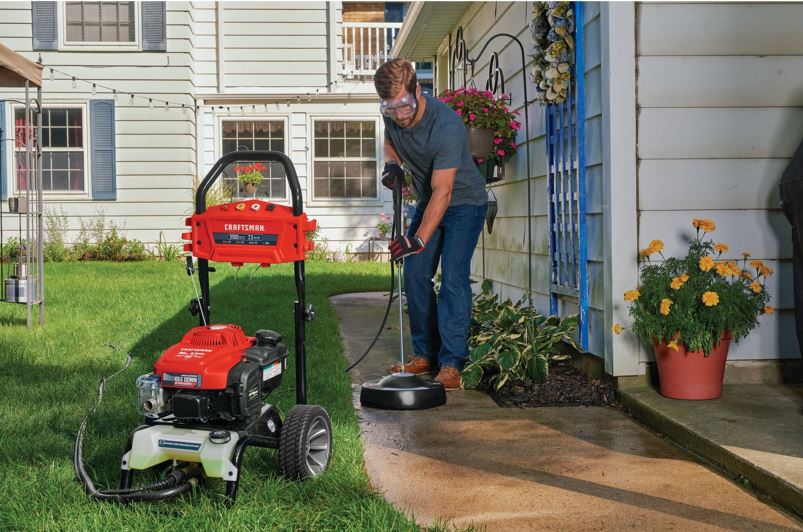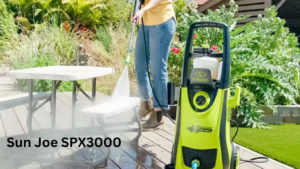A pressure washer is a powerful cleaning tool that utilizes high-pressure water spray to remove dirt, grime, mold, and other stubborn stains from various surfaces. Common uses range from cleaning cars and outdoor furniture to stripping paint and washing the exterior of buildings.
As handy as pressure washers are, like any machinery, they can present issues. Whether it’s not starting, low pressure, or leaks, it’s important to troubleshoot these problems promptly to prevent further damage and maintain efficiency.
This article aims to guide you through diagnosing and resolving common pressure washer problems. Even if you’re a novice, this comprehensive guide can turn you into a home mechanic. The first step towards success is understanding your pressure washer.
Understanding Your Pressure Washer
Key Components of a Pressure Washer
Pressure washers may vary by model, but they all share four main components:
- Engine or Motor: Powers the device.
- Water Inlet: A hose that connects the pressure washer to your water supply.
- Pump: Driven by the engine to create water pressure.
High-Pressure Hose: Delivers the pressurized water to the cleaning nozzle.
How Does a Pressure Washer Work?
In simple terms, your pressure washer takes water from the source, boosts its pressure via the pump, then releases it through a high-pressure hose and nozzle. This high-pressure stream is what blasts away stubborn grime.
Safety First!
Always remember to prioritize safety when using and troubleshooting a pressure washer. Always wear protective gear, keep the spray away from electrical fixtures, and never aim it at people or pets.

Common Pressure Washer Problems and Their Causes
Several factors could prevent your pressure washer from starting, such as a disconnected spark plug, lack of fuel, or a faulty ignition coil.
- Low pressure could be due to a clogged nozzle, air in the system, or a worn-out pump.
- This could be a sign of a worn spray gun, clogged nozzle, or pump problems.
- Water leaks often occur at connection points and may indicate a faulty seal or broken component.
- Excessive noise might be due to a clogged inlet or air in the pump.
Troubleshooting Pressure Washer Problems
- First, check if the spark plug is connected, and there’s sufficient fuel. If these are fine, you may need to inspect the ignition coil.
- Clean your nozzle and make sure there’s no air in the system. If pressure remains low, consider replacing the pump.
- A worn spray gun or a clogged nozzle can lead to uneven pressure. If these are in good condition, inspect the pump.
- Check all connection points and replace any faulty seals or components.
- Ensure the inlet isn’t clogged and there’s no air in the pump. If the noise persists, a pump replacement may be necessary.
Prevention and Maintenance Tips
Regular Maintenance for Longevity
Preventive care is crucial to extend the lifespan of your pressure washer. Regular maintenance helps identify and rectify issues early, ensuring efficient operation.
Routine Checks and Maintenance Tasks
Check the water inlet, nozzles, and seals regularly. Change the oil and clean the air filter as per the manufacturer’s guidelines.
Preventive Measures
Avoid running the pressure washer without water, and ensure it’s always well-lubricated to prevent common problems.
When to Seek Professional Help
Know When to Call a Pro
If troubleshooting doesn’t resolve the issue or if you’re uncomfortable performing certain tasks, it’s best to seek professional help.
Risks of DIY Repairs
While DIY repairs can save money, incorrect handling can lead to more severe damage or even personal injury.
Finding a Trusted Mechanic
Look for certified professionals with positive reviews and reasonable rates. Don’t hesitate to ask questions about their experience and the repair process.
Conclusion
Understanding your pressure washer and knowing how to troubleshoot common issues are key to maintaining its performance. While DIY skills can go a long way, don’t hesitate to seek professional help when needed. Remember, the goal is to ensure your pressure washer serves you effectively for a long time.







